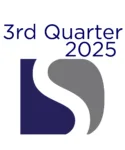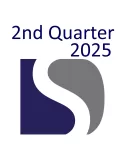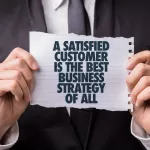Success is the root cause of all productized solutions. As humans, our innovative and pragmatic nature makes us want to apply success in as many places as possible because we believe it will save us time and resources. Sometimes, it does. However, more often, we get caught up in the lure of an easy win and end up missing an opportunity.
Lean is arguably the most recognized productization of any approach to improvement. Lean was introduced in 1990 when Womack, Jones & Roos coined it in their book “The Machine That Changed the World.” Later in 1996, Jones and Womack published “Lean Thinking: Banish Waste and Create Wealth in Your Corporation” and condensed Toyota’s Production System into five principles.
Through the lens of these principles, the authors (and many others who became followers) see the possibility of Lean everywhere. And it doesn’t stop with those who have adopted it; they have even gone back through history to try and label other successes as Lean. What started as one company’s solution has become a productized approach for every organization.
From humble beginnings to grand aspirations
Creativity and innovation spark the kind of action that leads to success: think about all the ideas that start in a conference room, on the shop floor, at someone’s desk, or in a garage and evolve into meaningful and perhaps even invaluable results.
What causes innovation to become a sensation is its easy adoption in solving problems. The flip side is — you can’t make a difficult or clunky idea flourish, no matter how much you promote it.
Lean is one such abstruse idea that people keep trying to grow. Some want Lean to be the go-to for everything. If you want to convince people of an obscure idea, you have to keep expanding the definition to find an explanation that fits. Believers go out of their way to assume any successful concept into Lean’s definition. They hope that more successful ideas will finally make Lean a success.
There was some use in the original definition, but the awkward attempt to show its worth only stunted its growth. The aspiration for most productized solutions only reveals the ugly truth about using them: that sweeping change wastes time.
Imitation limits innovation
The attempt to copy the Toyota Production System has only shown that each company must create a business system from its own origins, and imitation does not lead to new capabilities.
In the 90s, there reached a point when people should have understood the building blocks Toyota used instead of productizing the result. Some understand this but are accused of not understanding Lean; they see Lean as a set of tools to use as needed. Meanwhile, diehard believers insist that Lean is a holistic approach that can’t be cherry-picked.
Diehards have it all wrong, and the ‘Lean is a set of tools’ people are mostly correct. When a productized solution is the main focus of an organization, what truly matters becomes second at best. An organization’s purpose and strategic choices should make up the holistic guidance.
All productized solutions are based on the results of one or more processes or systems. Someone takes the time to write down the steps that got the results, then generalizes them until they can be applied across as many situations as possible. The more the better because it increases the odds of selling.
All the concepts observed in Toyota’s business model are the result of more fundamental concepts. Those concepts — combined with Toyota’s culture, competence, and unique way of creating value — evolved into its business system. And that is what organizations need to do: take an evolutionary approach using all the necessary means to fulfill their purpose and realize the future version of themselves.
How productized success fails
I have improved business systems in many companies across multiple industries. Most systems have endured, while others have not.
For those that persisted, it was not just because they knew the why, what, and how but also because leadership fostered the implementation. The why came from making choices that would change customer behavior. Leadership kept the big picture in mind, using whatever means required to realize a vision for their organization. Leadership and their awareness of the business must come first, followed by the reasons for change. Then, they can decide where and how to change effectively.
The majority of productized solutions become sweeping changes without the personalized fit required. Lean is no different. As a synthesized result, it can’t effectively be superimposed on an organization.
With all the issues challenging businesses today, do we truly believe that a productized solution like Lean is the answer to making strategic choices and revealing what’s required to change customer behavior?
Lean is a borrowed result
Consumers and supply-chain professionals say with their dollars and feedback: “don’t tell me, show me.” So who cares what you call your way of operating or improving?
Lean as a productized solution has failed because it was sanitized from the results of another organization. However, there is little to no understanding of the origins of those results and where they should and should not be applied.
As with all productized solutions, most business decisions are out-of-scope for their application, like which markets to enter or exit or what to do with the voice of the customer. It can help make-versus-buy decisions, but additional factors go into those choices. Once you find what causes customer behaviors or performance in your organization, what was believed to be an easy solution falls apart.
Cultures get so engrossed in the implementation of productized solutions that they lose focus on what the company is supposed to be doing. Implementing something like Lean requires learning new words, new processes, and an appreciation for someone else’s way of doing business. It often requires formalized training and certification, but not in the ways that create value or operate the company.
Two questions to consider if you doubt whether you are using a productized solution:
Is your team looking at a root cause or a symptom?
Productized solutions can be viewed as symptoms, and many latch onto them if they only see symptoms in their analysis. One example is reacting to customer complaints about late deliveries by implementing Just In Time without linking the cause to that effect. Jumping to a solution before understanding the problem is wasteful. First, ask why your customers are complaining or buying.
Is it your offerings or the way they are delivered?
Your company could be marketing to the wrong prospects or creating a misunderstanding of the actual features and benefits. The answer to big questions often leads to many specific reasons. Using productized solutions sweep right past where you can succeed.
Productized solutions become programs – A bureaucratic ending to a failed attempt
No matter how hard people try, productized solutions can’t become someone else’s business system. Human nature compels us to formalize what we believe to be good for us. What else can one do with a broad brush for change other than making it a program? Programs are most often handled through project management.
This leads to a beginning, an end, milestones, resources, and who is participating, which causes anticipation of progress, results, and an ending. Programs have an audience of stakeholders, with many on the sidelines defending or criticizing. The problem is that programs have a greater than 60% chance of failure.
Without a personalized approach and proper leadership, teams will struggle to achieve significant, sustainable results.
Read our follow up article about what to do instead of adopting a productized solution: If Not Productized Solutions, Then What?







